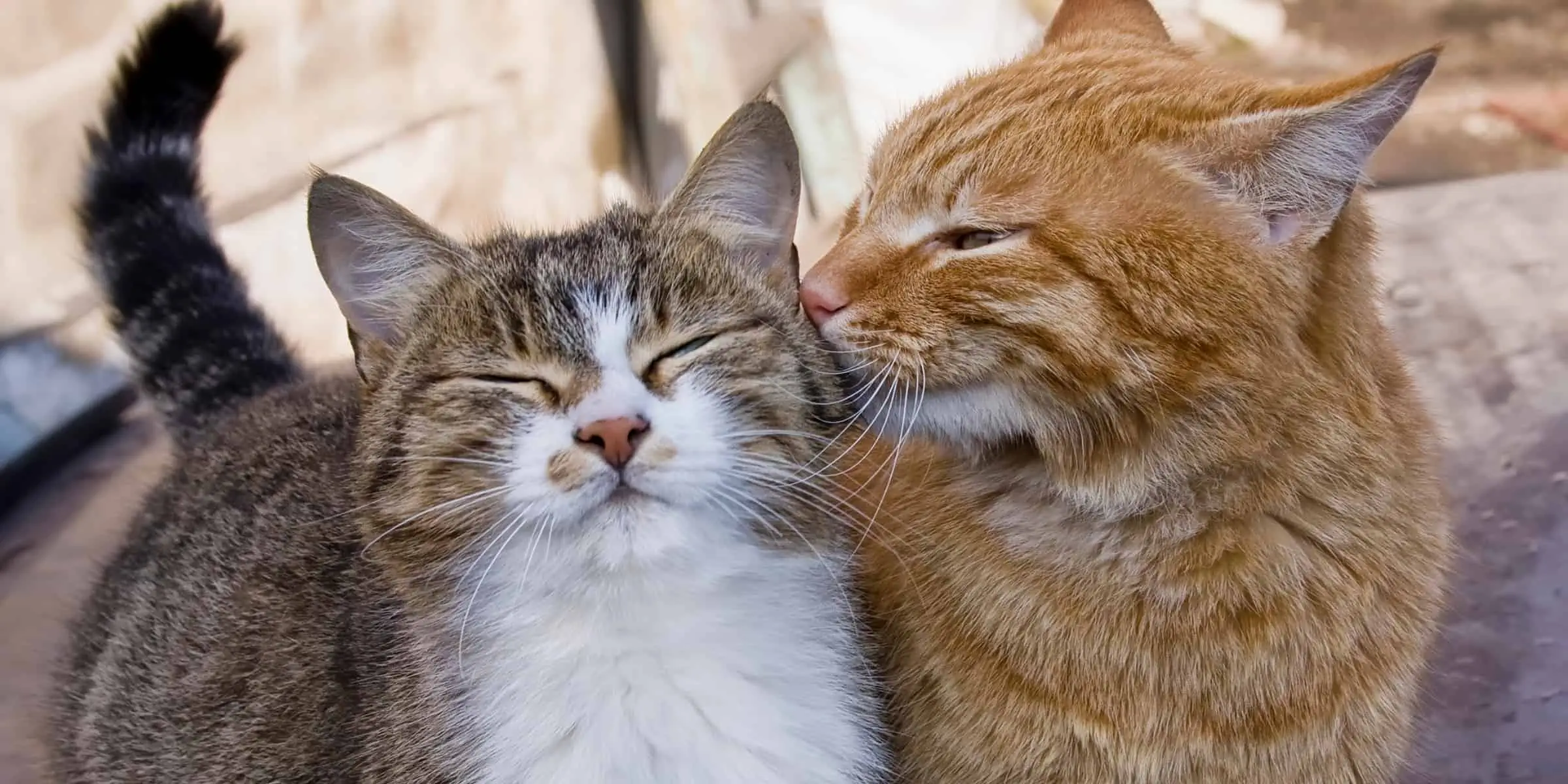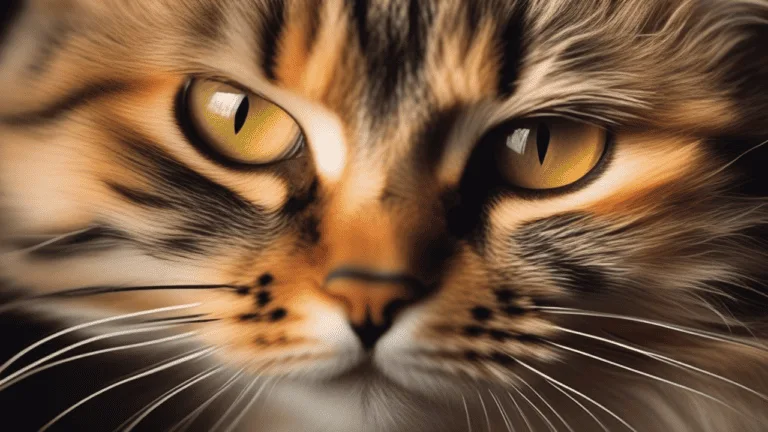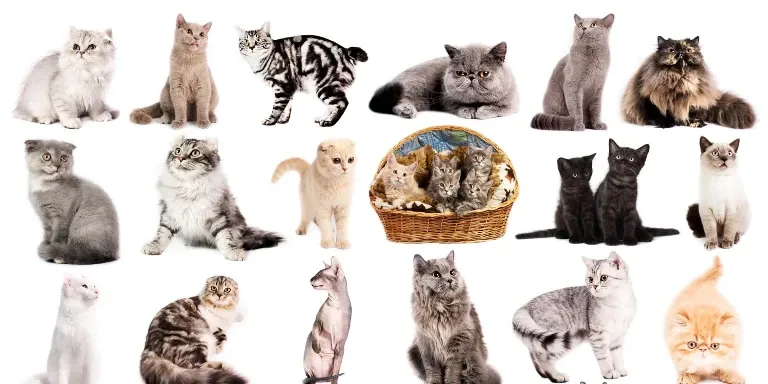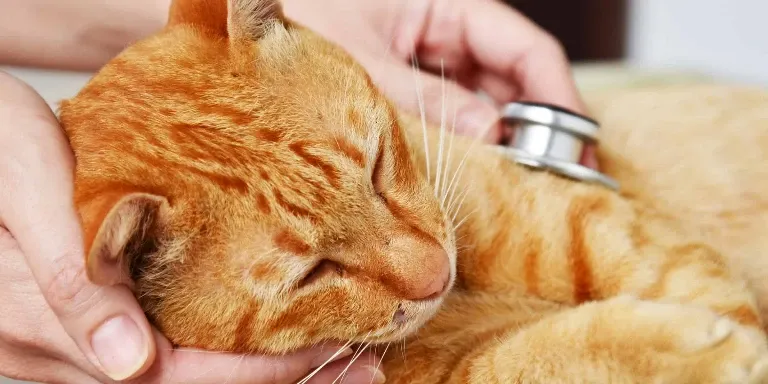The Best Fluffy Pancakes recipe you will fall in love with. Full of tips and tricks to help you make the best pancakes.

Do you wonder if your furry feline friend is a mixed breed? With so many cats in the world, it’s not surprising that many of them have mixed ancestry.
Most cats are mixed breed with the majority being domestic shorthairs or domestic longhairs, which are considered mixed breeds.
A mixed breed cat is one that has more than one breed in their genetic makeup. These cats are also known as domestic shorthair or longhair cats. While many cats may look similar, each breed has its own distinct characteristics and traits.
Understanding what breeds make up your cat’s ancestry can help you better understand their behavior and health needs. In this article, we’ll explore the prevalence of mixed breed cats, the benefits of adopting one, and how to identify if your cat is a mixed breed.
Defining Mixed Breed Cats
You might be surprised to learn that most cats you see on the street are actually mixed breed kitties! Determining ancestry in cats can be a tricky business, as there are no established breed standards for felines. However, genetic testing has become increasingly popular in recent years, allowing cat owners to learn more about their pets’ heritage.
Genetic testing can help determine a cat’s ancestry by analyzing their DNA. This process involves taking a small sample of the cat’s saliva or blood and sending it off to a laboratory for analysis. The lab then compares the cat’s DNA against a database of known feline breeds to identify any genetic markers that may indicate a particular breed.
While genetic testing can be helpful in determining a cat’s ancestry, it’s important to remember that the results are not always 100% accurate. This is because cats have been interbreeding for centuries, making it difficult to pinpoint their exact genetic makeup.
Nonetheless, genetic testing can provide valuable insight into a cat’s heritage and help owners better understand their pets.
Prevalence of Mixed Breed Cats
Purrhaps, it’s probable that a plethora of felines are fusions of various feline families. Cat breeding practices have led to the creation of numerous cat breeds, each with unique physical and behavioral characteristics. However, many cats do not fit neatly into one specific breed category, and are instead classified as mixed breeds. In fact, it’s estimated that the majority of cats are mixed breeds.
The prevalence of mixed breed cats can be attributed to a number of factors. One of the main reasons is the genetic diversity among cat breeds. Unlike dogs, which have been selectively bred for specific purposes for centuries, cats have not undergone the same level of intense breeding. As a result, there is a greater degree of genetic diversity among cat breeds, which can lead to more variation within litters and increased likelihood of mixed breed offspring.
Another factor contributing to the prevalence of mixed breed cats is the lack of regulation and control over cat breeding. Unlike purebred cats, which are typically bred by registered breeders and adhere to specific breeding standards, mixed breed cats can be the product of accidental matings or intentional breeding by individuals without proper knowledge or experience. This can result in a large number of mixed breed cats being born each year.
While there are certainly purebred cats in existence, it’s likely that the majority of cats are mixed breeds. Factors such as genetic diversity among cat breeds and lack of regulation over cat breeding have contributed to the prevalence of mixed breed cats. However, regardless of breed, all cats deserve love and care from their human companions.
Purebred Cats vs. Mixed Breed Cats
If you’re considering adopting a feline companion, it’s important to weigh the pros and cons of both purebred and mixed breed cats to determine which type of cat is the best fit for you and your lifestyle.
One of the main differences between purebred and mixed breed cats is the breeding practices involved. Purebred cats are bred to specific standards and traits, often resulting in genetic health issues due to a lack of genetic diversity. On the other hand, mixed breed cats have a wider gene pool, making them less prone to genetic health issues.
When it comes to purebred cats, it’s important to research the breed and the breeder thoroughly before making a decision. Many purebred cats are prone to certain health issues due to their breeding practices. For example, Persian cats often have breathing problems due to their flat faces, while Siamese cats are prone to dental issues.
Mixed breed cats, on the other hand, have a wider range of genetic diversity, making them less prone to these health issues. Overall, whether you choose a purebred or mixed breed cat depends on your personal preferences and lifestyle. If you’re looking for a specific breed with specific traits, a purebred cat may be the right choice for you. However, if you’re looking for a healthy and unique companion with a wide range of characteristics, a mixed breed cat may be the better option.
Regardless of your choice, it’s important to research and choose a reputable breeder or shelter to ensure the health and well-being of your feline companion.
Benefits of Adopting a Mixed Breed Cat
If you’re considering adopting a cat, choosing a mixed breed can be a great option. These cats often have unique personalities that make them stand out from purebred cats.
Additionally, adopting a mixed breed cat can be more affordable than purchasing a purebred.
Finally, mixed breed cats may have fewer health issues due to their diverse genetic makeup.
Unique Personalities
You’ll likely notice that each individual cat has their own quirks and characteristics that make them stand out, making it clear that cats have unique personalities just like humans. These personality traits can range from playful and curious to independent and aloof.
It’s important to recognize that cat behavior is not solely dependent on their breed, but rather on their individual temperament and experiences. For instance, a mixed breed cat may exhibit certain traits that are more commonly associated with a specific breed, such as an affinity for water or a tendency to be vocal. However, these traits may also be present in purebred cats or completely absent in other mixed breed cats.
Ultimately, a cat’s personality is shaped by a variety of factors, including genetics, environment, and socialization. It’s important to get to know your cat as an individual and appreciate the unique qualities that make them who they are.
Lower Cost and Health Issues
One way to save money on cat ownership is by keeping up with regular vet visits and preventative care. Preventative care can help catch and treat health issues early on, which can ultimately save you money in the long run.
For example, vaccines can prevent your cat from getting certain illnesses that can be expensive to treat, such as feline leukemia. Additionally, regular check-ups can help detect any potential health issues before they become serious, which can also be cost-saving.
While there are certainly financial advantages to preventative care, it’s important to consider the ethical concerns as well. Many cats end up in shelters because their owners cannot afford to treat their health issues. By taking the necessary steps to keep your cat healthy, you’re not only saving money, but also ensuring that your cat has a happy and healthy life.
So, while it may seem like an added expense, regular vet visits and preventative care can ultimately be a wise investment, both financially and ethically.
How to Identify a Mixed Breed Cat
When identifying a mixed breed cat, there are two key areas to focus on: their physical characteristics and behavioral traits.
Physically, mixed breed cats may exhibit a variety of features, including different coat patterns, eye colors, and body types.
Behaviorally, they may display a combination of traits from their various breeds, such as being outgoing and sociable, or more reserved and independent.
By understanding these key points, you can better identify and appreciate the unique qualities of your mixed breed feline companion.
Physical Characteristics
If you’re looking for unique physical characteristics in a cat, mixed breeds are the way to go! These cats are the result of breeding between two or more different cat breeds, leading to a unique combination of traits.
Here are some of the physical characteristics that you might see in mixed breed cats:
- Size: Mixed breed cats can vary in size, from small and petite to large and muscular. This is because their size is determined by the size of their parents, and mixed breed cats can have parents of different sizes.
- Coat: Mixed breed cats can have a variety of coat patterns and textures, from short and smooth to long and fluffy. The color of their coat can also vary, depending on the colors of their parents’ coats.
- Facial features: Mixed breed cats can have unique facial features, such as a round face or pointed ears, that are inherited from their parents.
- Body shape: Mixed breed cats can have a range of body shapes, from lean and athletic to round and chubby. This is because their body shape is determined by the combination of genes from their parents.
Overall, mixed breed cats can have a wide range of physical characteristics that make them unique and interesting pets. While cat breed genetics and mixed breed cat breeding controversies may be a topic of debate, there’s no denying that mixed breed cats can be a great addition to any family.
Behavioral Traits
Now that we’ve explored the physical characteristics of cats, let’s take a look at their behavioral traits. It’s important to note that cat breed stereotypes don’t always hold true.
While certain breeds may have tendencies towards certain behaviors, an individual cat’s personality and behavior can be greatly impacted by their environment.
Cats are known for being independent creatures who often prefer to keep to themselves. However, this can vary greatly depending on the individual cat’s personality and how they were raised.
For example, a cat who was socialized with humans and other animals from a young age may be more outgoing and affectionate than a cat who was kept in isolation. Additionally, cats who are given plenty of play and enrichment opportunities may be less likely to engage in destructive behaviors like scratching or biting.
It’s important to remember that while certain breeds may have general tendencies, each cat is unique and should be treated as an individual.
Factors that Affect a Cat’s Breed
You’ll find that a cat’s breed is influenced by a combination of factors, like a recipe with carefully selected ingredients. Factors affecting a cat’s breed can include genetic mutations, environmental conditions, and selective breeding.
Genetic mutations can play a role in a cat’s breed. For example, the Siamese breed is known for its blue eyes and distinctive coat color due to a genetic mutation affecting melanin production. The Scottish Fold has a genetic mutation that affects the cartilage in their ears, causing them to fold forward.
Environmental conditions can also play a role in a cat’s breed. Cats that live in colder climates may develop a thicker coat to protect themselves from the cold. Cats in areas with high levels of sunlight may develop a darker coat to protect themselves from UV radiation.
Selective breeding is another factor that can affect a cat’s breed. Breeders may select for certain traits, such as coat color or temperament, and breed cats with those traits together. This can lead to the development of distinct breeds with specific characteristics. However, it’s important to note that not all cats with similar traits necessarily come from the same breed. Many cats are mixed breeds and may have inherited certain traits from different breeds.
Common Mixed Breed Cat Varieties
Take a look at some of the popular mixed breed varieties of feline companions that you might encounter at your local shelter or rescue. Mixed breed cats have become increasingly popular in recent years, and for good reason! These cats often exhibit a combination of desirable traits from multiple breeds, making them unique and lovable pets.
Here are three popular mixed breed cat names you might come across during your search for a new feline companion:
- Tabby Point Siamese Mix
- Maine Coon Mix
- Bengal Mix
Mixed breed cat adoption rates have also been on the rise, as more people are realizing the benefits of adopting a unique and healthy pet. Mixed breed cats tend to have fewer health problems than purebred cats, as they have a wider gene pool to draw from. Additionally, adopting a mixed breed cat can be a more affordable option than purchasing a purebred cat from a breeder.
While there are many different mixed breed cat varieties out there, one thing is certain: these cats are full of personality and make wonderful companions. Whether you’re looking for a playful Bengal mix or a laid-back Maine Coon mix, there’s a mixed breed cat out there for everyone.
So why not consider adopting one of these lovable felines and giving them a forever home?
Can Mixed Breed Cats Exhibit Aggressive Behaviors?
Mixed breed cats, including those with genetics from the most aggressive cat breeds, can exhibit aggressive behaviors. It’s important to consider individual temperament and socialization rather than just breed when assessing a cat’s behavior. Proper training and socialization can help mitigate aggressive tendencies in mixed breed cats.
Conclusion
Congratulations, you now have a better understanding of mixed breed cats!
As you’ve learned, mixed breed cats make up the majority of the feline population. They come in a wide variety of colors, patterns, and personalities, making them unique and individual.
Just like a box of chocolates, you never know what you’re going to get with a mixed breed cat. They can be a pleasant surprise, just like finding a hidden gem.
Adopting a mixed breed cat not only gives you a wonderful companion but also helps reduce the number of cats in shelters. With the knowledge you’ve gained, you can now confidently identify a mixed breed cat and appreciate their one-of-a-kind qualities.
So go ahead and open your heart and home to a mixed breed cat and experience the joy and love they can bring into your life.








